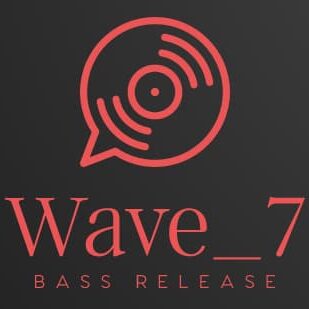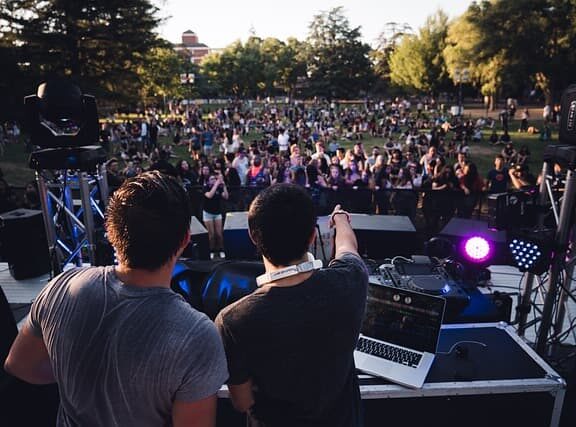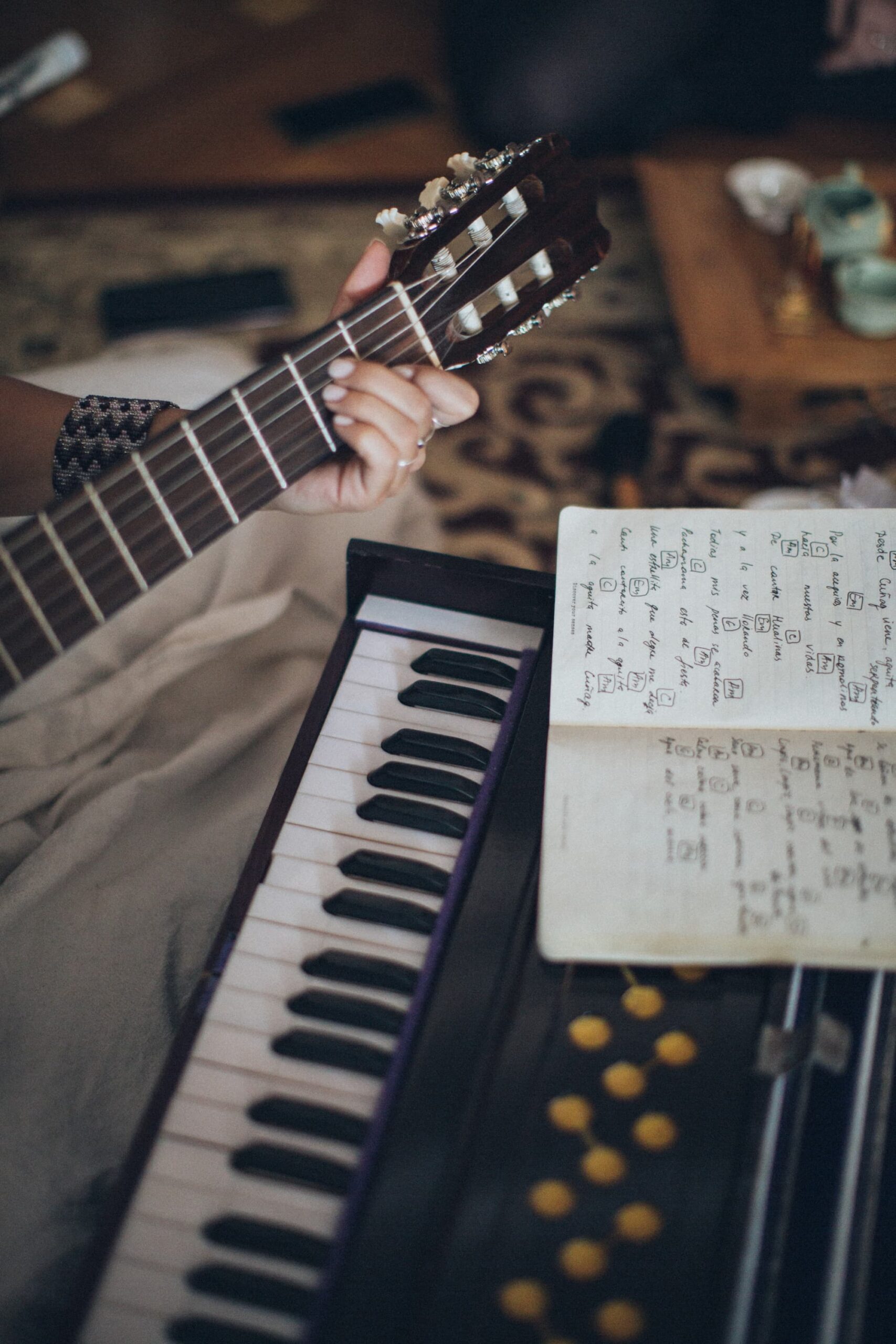Dubstep
Dubstep is a genre of electronic music that originated in south London in the late 1990s. It is usually characterized by sparse syncopated rhythmic patterns with accented sub-bass frequencies. The style emerged as an offshoot of British Garage, drawing on a lineage of related styles such as 2-step and dub reggae, as well as Jungle, broken beat and grime. In the United Kingdom, the genre’s origins can be traced back to the development of the Jamaican scene in the early ’80s.
By the late 2000s and early 2010s, the genre had become commercially successful in the UK, with more and more singles and remixes hitting the music charts. Music journalists and critics also noticed the influence of dubstep on the activities of some pop artists. Around the same time, musicians began combining elements of the original dubstep sound with other influences, creating fusion genres including future garage, slower and more experimental post-dubstep, and harder electro-house and heavy metal influenced brostep, which greatly helped popularize the genre.
Features
The music website Allmusic has described the sound of dubstep as “tightly woven pieces with stunning bass lines and reverberating drum patterns, with cut samples and occasional vocals.” The ingredients of dubstep originally came from bleep ‘n’ bass, jungle, techstep, Photek-style neurofunk, speedy garage and 2 step.
Dubstep’s roots stem from the more experimental recordings of British Garage artists, who sought to incorporate elements of drum ‘n’ bass into a two-step garage sound. The moods of the genre are usually dark; tracks often use a minor key and may contain dissonant harmonies, such as a tritone interval in the riff. Compared to other styles of garage music, dubstep tends to be more minimalist, focusing on prominent low frequencies.
Dubstep rhythms are usually syncopated, often shuffled or include deadlifts. The tempo is almost always in the 138-142 beats per minute range, with a clap or trap usually inserted every third beat in a measure.
One of the characteristic features of dubstep is the wobbling bass, often called “woob,” where extended bass notes are rhythmically manipulated. This style of bass is usually created by using a low-frequency oscillator to manipulate certain synth parameters such as volume, distortion or filter clipping. The final sound is a timbre that is interspersed with rhythmic changes in volume, filter cut or distortion.
Initially, dubstep releases had some structural similarities to other genres such as drum and bass and British garage. There’s usually an intro, a main section (often with a bass drop), a middle section, a second main section similar to the first (often with a different drop) and an exit.
Electro house
Electro house is a musical genre, characterized by heavy bass and tempo of about 130 beats per minute. Its origins were influenced by tech house and electro. The term has been used to describe the music of many DJs, including Benny Benassi, Daft Punk, Skrillex and Steve Aoki.
Electro-house is characterized by its heavy bassline. It is often performed in the form of buzzing bass lines, such as those created with sawtooth waves and distortion. A powerful bass drum sound is used in the 4/4 size. The tempo of electro house is usually from 125 to 135 beats per minute. Electro house sometimes resembles tech house, but it can contain melodic elements as well as samples and synths.
Subgenres
Big room
In the early 2010s, a type of electro house known as Big room began to develop, especially gaining popularity through EDM-oriented events and festivals such as Tomorrowland. Big room then began to move away from the classification of the electro house sub-genre and began to develop as a genre in its own right. Big room compositions resemble Dutch house, often incorporating drops, minimalist percussion, regular beats, multi-level sub-bass beats, simple melodies and synth-based drops. The Big room track layout is very similar to that of a typical electro house track. Big room is considered a subgenre of electro house.
Complextro
Complextro is characterized by glitchy, intricate bass lines and textures created by abrupt instrument clipping in quick succession. The term, portmanteau from the words “complex” and “electro,” was coined by Porter Robinson to describe the sound of music he was making in 2010. He cited the sounds of video games or chiptunes as an influence on this style of music along with the analog synth music of the 1980s. Other artists of the genre include Adventure Club, Kill The Noise, Knife Party, Lazy Rich, The M Machine, Madon Mord Fustang, Virtual Riot and Wolfgang Gartner.
Dutch house
Dutch house, sometimes referred to as “dirty Dutch,” is a style of electro house that originated in the Netherlands and gained prominence by 2009. The genre is primarily defined by complex rhythms made from Latin American drum sets, less emphasis on bass lines and screechy, high-pitched lead synths. The sub-genre has been influenced by Detroit techno, hip-hop and other urban music styles.
Fidget house
Fidget house, or fidget house, is characterized by stripped-down vocal snippets, messy bass lines with bent pitch, and synthesized 4/4 beats. It contains influences from Chicago house, Detroit techno, Baltimore club, Kuduro, Pimba and hip-hop.
Trap music (EDM)
EDM trap is a style of electronic dance music (EDM) that originated in the mid-2000s and early 2010s. It combines elements of trap-music, an offshoot of southern hip-hop, with elements of EDM such as build-ups, dips and breakdowns. The diversity of performers stimulated the Trap movement in pop music and EDM.
Trap music (EDM) comes from techno, dub and Dutch House, as well as southern hip-hop in the late 2000s and early 2010s. This form of music can be simplified with three features: 1/3 hip-hop; 1/3 Dance Music (Hardstyle) and 1/3 dub .
In the second half of 2012, Trap electronic music becomes more popular and has a noticeable impact on the dance music scene. Musicians and fans initially referred to the music simply as “trap,” which led to the term “trap” being used to refer to music by both rappers and electronic musicians, contributing to confusion among followers of both trends. Instead of referring to one genre, the term “trap” was used to describe two separate genres: hip-hop and dance music. The new wave has been referred to by some as Trap EDM to distinguish it from rap. The terms “Trap-house” and “Trapstep” are often referred to by musicians to describe the musical structure of an individual track. Evolving Trap EDM has witnessed the inclusion and stylistic influence of dubstep, with Trap being called a replacement for dubstep in the mid-2010s.





